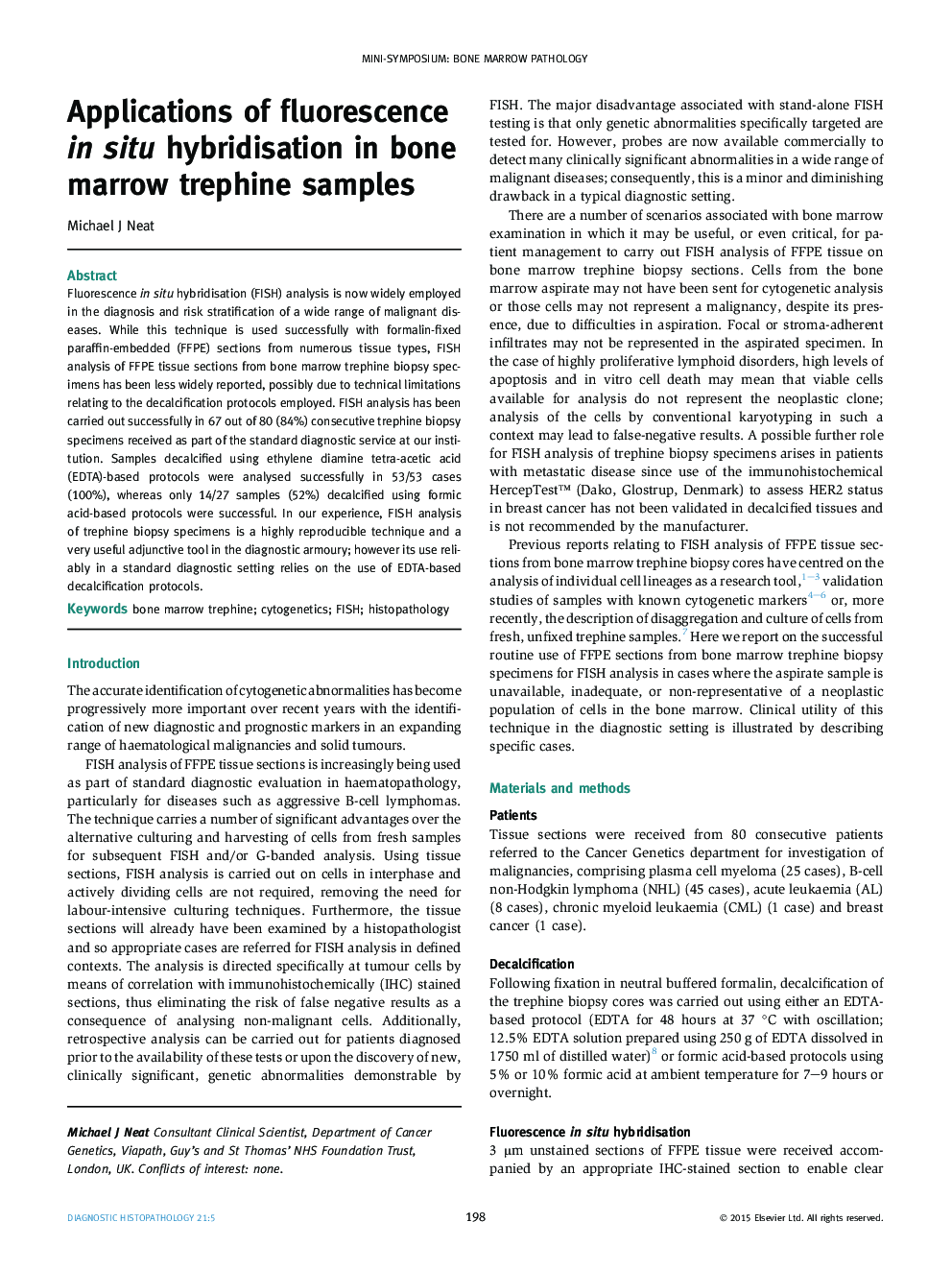| Article ID | Journal | Published Year | Pages | File Type |
|---|---|---|---|---|
| 4131057 | Diagnostic Histopathology | 2015 | 5 Pages |
Fluorescence in situ hybridisation (FISH) analysis is now widely employed in the diagnosis and risk stratification of a wide range of malignant diseases. While this technique is used successfully with formalin-fixed paraffin-embedded (FFPE) sections from numerous tissue types, FISH analysis of FFPE tissue sections from bone marrow trephine biopsy specimens has been less widely reported, possibly due to technical limitations relating to the decalcification protocols employed. FISH analysis has been carried out successfully in 67 out of 80 (84%) consecutive trephine biopsy specimens received as part of the standard diagnostic service at our institution. Samples decalcified using ethylene diamine tetra-acetic acid (EDTA)-based protocols were analysed successfully in 53/53 cases (100%), whereas only 14/27 samples (52%) decalcified using formic acid-based protocols were successful. In our experience, FISH analysis of trephine biopsy specimens is a highly reproducible technique and a very useful adjunctive tool in the diagnostic armoury; however its use reliably in a standard diagnostic setting relies on the use of EDTA-based decalcification protocols.
